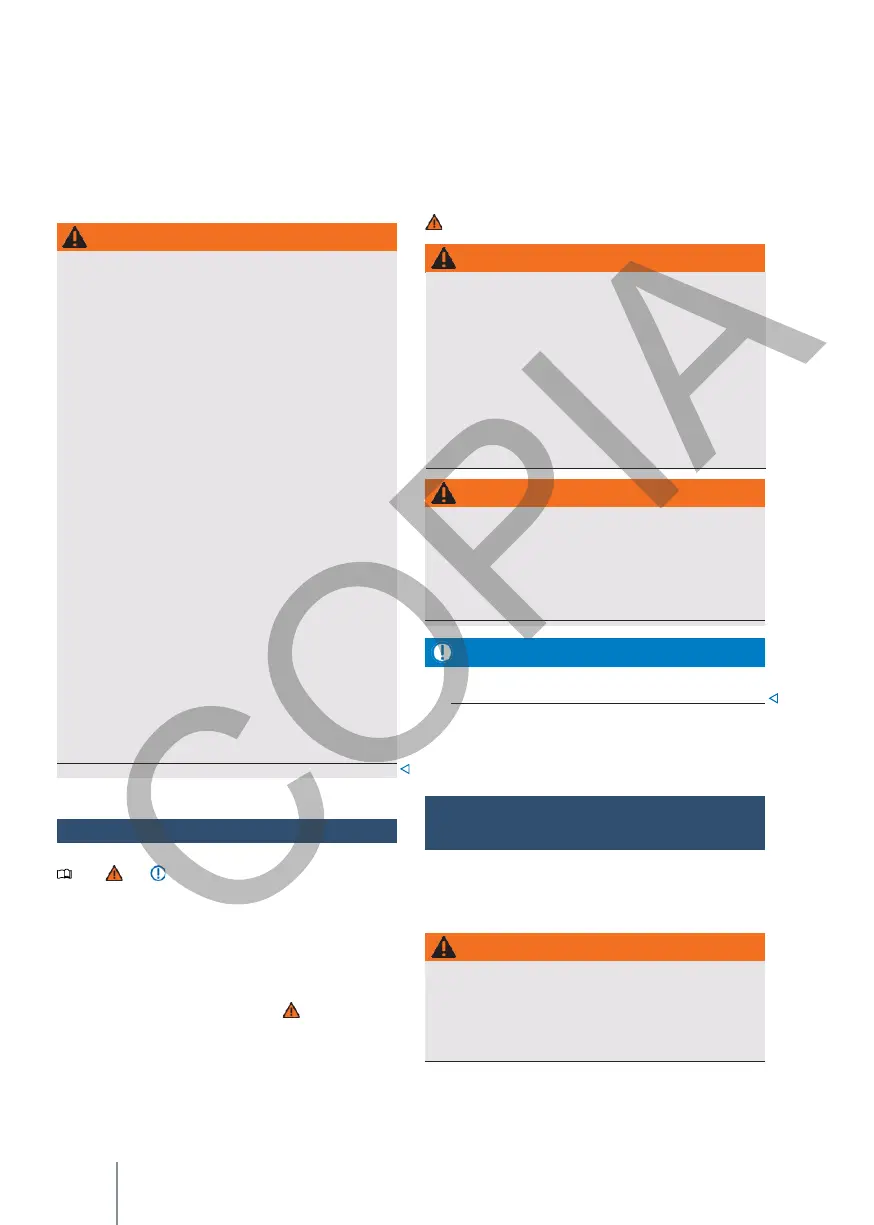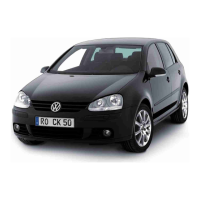Incorrect attachment and use of the basic supports
and the supporting structure can cause the
complete luggage carrier to become detached
from the roof, resulting in accidents and injuries.
•
Only use the basic supports and the
supporting structure when they are in perfect
condition and correctly attached.
•
Always mount the basic supports and the
supporting structure correctly. Always observe
the enclosed installation instructions.
the manufacturer.
•
Fix the basic supports only at the points
provided for this purpose.
•
Always mount special roof racks for bicycles,
skis, surfboards, etc. correctly. Always observe
the
assembly instructions supplied by the
manufacturer.
•
Check the roof rack fastenings before setting
off and, if necessary, tighten them after a short
journey. If necessary, tighten them after a
short journey.
For long journeys, check the threaded joints and
fastenings at every break.
•
Do not carry out any kind of modification
or repair to the basic supports or structure of the
ture.
If the load is loose or improperly secured, it could
fall off the roof rack and cause accidents and
injuries.
•
Always use suitable and undamaged lashing
straps, lashing straps or securing straps.
status.
If a towing device is mounted on the vehicle, this
can lead to accidents and serious injuries when
using the vehicle.
•
Never mount a towing device on the vehicle.
The holes and markings for attaching the base
brackets are located on the underside of the roof
brackets → fig. 145.
The holes and markings are only visible with the
door open.
Once the basic supports have been correctly
mounted, the supporting structure in question can
be attached to them.
If a roof rack with a lower load capacity is used, the
maximum permissible roof load cannot be fully
utilised. In this case, load the roof rack only up to
the weight limit specified in the manufacturer's
installation instructions.
Spreading the load
Distribute the load evenly and secure it correctly →
.
When opening the tailgate, make sure that it does
not hit the roof load.
Driving with a trailer
Loading a roof rack
Note and at the beginning of this
chapter on
page 219.
Maximum permissible roof load
The maximum permissible load that can be carried
on the roof is 75 kg (165 lb).
This figure is the sum of the weight of the roof rack
and the weight of the roof load → .
Always check the weight of the roof rack and the
weight of the load to be transported. If necessary,
weigh the load.
The vehicle is not approved for driving with a
trailer. It is not permitted to retrofit the vehicle with
a towing device.
Exceeding the maximum permissible roof load can
lead to an accident and considerable damage to
the vehicle.
•
Never exceed the indicated roof load, the
maximum permissible axle mass or the
maximum permissible vehicle mass.
•
Do not exceed the load capacity of the roof
carrier, even if the maximum permissible load
on the roof is not exceeded.
cho.
Information on
driving with trailer

